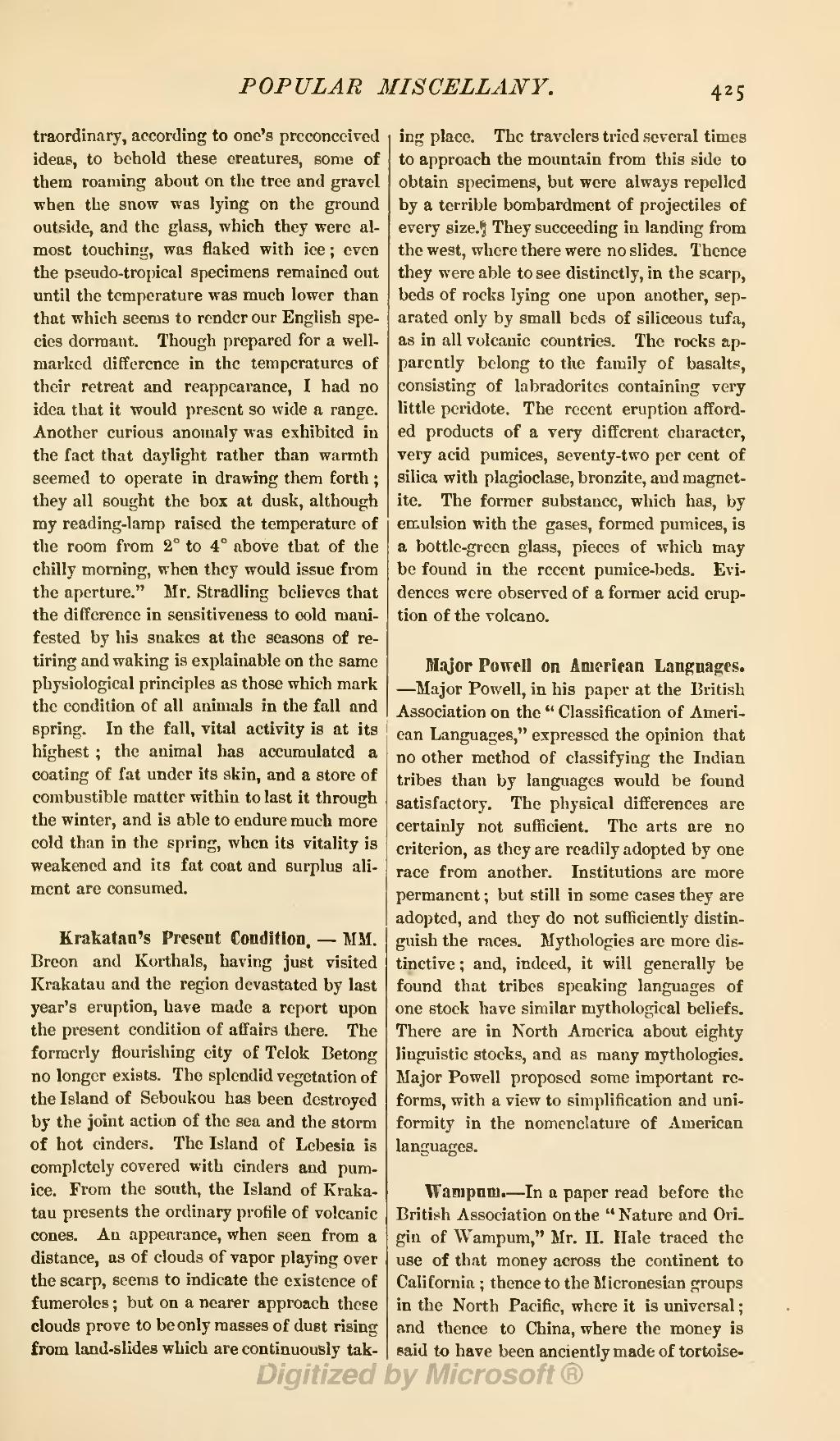traordinary, according to one's preconceived ideas, to behold these creatures, some of them roaming about on the tree and gravel when the snow was lying on the ground outside, and the glass, which they were almost touching, was flaked with ice; even the pseudo-tropical specimens remained out until the temperature was much lower than that which seems to render our English species dormant. Though prepared for a well-marked difference in the temperatures of their retreat and reappearance, I had no idea that it would present so wide a range. Another curious anomaly was exhibited in the fact that daylight rather than warmth seemed to operate in drawing them forth; they all sought the box at dusk, although my reading-lamp raised the temperature of the room from 2° to 4° above that of the chilly morning, when they would issue from the aperture." Mr. Stradling believes that the difference in sensitiveness to cold manifested by his snakes at the seasons of retiring and waking is explainable on the same physiological principles as those which mark the condition of all animals in the fall and spring. In the fall, vital activity is at its highest; the animal has accumulated a coating of fat under its skin, and a store of combustible matter within to last it through the winter, and is able to endure much more cold than in the spring, when its vitality is weakened and its fat coat and surplus aliment are consumed.
Krakatan's Present Condition.—MM. Breon and Korthals, having just visited Krakatau and the region devastated by last year's eruption, have made a report upon the present condition of affairs there. The formerly flourishing city of Telok Betong no longer exists. The splendid vegetation of the Island of Seboukou has been destroyed by the joint action of the sea and the storm of hot cinders. The Island of Lebesia is completely covered with cinders and pumice. From the south, the Island of Krakatau presents the ordinary profile of volcanic cones. An appearance, when seen from a distance, as of clouds of vapor playing over the scarp, seems to indicate the existence of fumeroles; but on a nearer approach these clouds prove to be only masses of dust rising from land-slides which are continuously taking place. The travelers tried several times to approach the mountain from this side to obtain specimens, but were always repelled by a terrible bombardment of projectiles of every size. They succeeding in landing from the west, where there were no slides. Thence they were able to see distinctly, in the scarp, beds of rocks lying one upon another, separated only by small beds of siliceous tufa, as in all volcanic countries. The rocks apparently belong to the family of basalts, consisting of labradorites containing very little peridote. The recent eruption afforded products of a very different character, very acid pumices, seventy-two per cent of silica with plagioclase, bronzite, and magnetite. The former substance, which has, by emulsion with the gases, formed pumices, is a bottle-green glass, pieces of which may be found in the recent pumice-beds. Evidences were observed of a former acid eruption of the volcano.
Major Powell on American Languages.—Major Powell, in his paper at the British Association on the "Classification of American Languages," expressed the opinion that no other method of classifying the Indian tribes than by languages would be found satisfactory. The physical differences arc certainly not sufficient. The arts are no criterion, as they are readily adopted by one race from another. Institutions are more permanent; but still in some cases they are adopted, and they do not sufficiently distinguish the races. Mythologies arc more distinctive; and, indeed, it will generally be found that tribes speaking languages of one stock have similar mythological beliefs. There are in North America about eighty linguistic stocks, and as many mythologies. Major Powell proposed some important reforms, with a view to simplification and uniformity in the nomenclature of American languages.
Wanmpum.—In a paper read before the British Association on the "Nature and Origin of Wampum," Mr. II. Hale traced the use of that money across the continent to California; thence to the Micronesian groups in the North Pacific, where it is universal; and thence to China, where the money is said to have been anciently made of tortoise--

